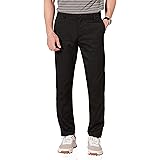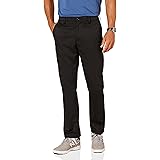Ever stood on the tee, watching your playing partners unleash powerful drives, and wondered, “How can I add that kind of pop to my own swing?” Many golfers recognize that a strong, consistent golf swing isn’t just about technique; it’s also deeply rooted in physical conditioning. Indeed, building golf-specific strength can dramatically improve your game, translating into greater distance, better control, and reduced fatigue over 18 holes. While the video above offers a fantastic, rapid-fire rundown of five essential dumbbell exercises for golf, let’s delve deeper into why these movements, and others like them, are crucial components of any serious golfer’s fitness regimen.
Golf fitness isn’t just about brute strength; it’s about developing coordinated power, rotational stability, and robust endurance. Think of your golf swing as a finely tuned engine: every part needs to work in harmony for optimal performance. Dumbbells are exceptionally versatile tools for this purpose, allowing for unilateral (one-sided) training that mimics the often asymmetric demands of the golf swing. Consequently, incorporating targeted dumbbell exercises can address muscle imbalances and build the foundational strength necessary for a more athletic, injury-resilient game.
Understanding the Demands of a Powerful Golf Swing
Before we dive into specific exercises, it’s beneficial to understand what muscles and movements are paramount in golf. A golf swing is an intricate dance of force generation, transfer, and release. This dynamic movement pattern requires a robust core, powerful glutes, strong shoulders, and flexible hips. Moreover, the ability to create separation between your upper and lower body (often called “X-factor stretch”) is a hallmark of long hitters, relying heavily on rotational strength and mobility.
Rotational Power and Core Stability for Golfers
Imagine your core as the central pivot of your golf swing, much like the main mast of a sailboat. Without a strong, stable mast, the sails (your arms and club) cannot effectively harness the wind (your swing speed). The core muscles—abdominals, obliques, and lower back—are responsible for both initiating and resisting rotation, which is critical for transferring energy from the ground up through your body and into the clubhead. Therefore, dumbbell exercises that challenge your core’s ability to stabilize and rotate are invaluable for developing golf-specific power and preventing injuries.
Essential Dumbbell Exercises for Golf Performance
Let’s expand on the excellent foundation provided in the video and explore how various dumbbell exercises can sculpt a golf-ready physique. These movements aren’t merely about lifting heavy; they’re about controlled, purposeful execution that directly translates to the course.
Dumbbell Goblet Squat: Building a Stable Foundation
The goblet squat is more than just a leg exercise; it’s a foundational movement that teaches proper squat mechanics, core bracing, and hip mobility, all critical elements for a powerful downswing. Holding a dumbbell vertically against your chest pulls your center of gravity forward, forcing your core to engage strongly to maintain an upright posture. This exercise is like building a strong, deep root system for a tree; a stable base allows for explosive growth and resilience.
How it helps your golf swing: Stronger glutes and quads provide the power source for the lower body drive in the downswing. Improved hip mobility allows for a deeper, more athletic setup and better weight transfer. Furthermore, the core engagement helps stabilize the spine, protecting it during the forceful rotation of the swing.
Single-Arm Dumbbell Row: Strengthening the Back and Shoulders
Think of the single-arm dumbbell row as sculpting the pulling muscles essential for both controlling the club on the backswing and generating speed on the downswing. It targets the lats, rhomboids, and biceps, contributing to better posture and shoulder stability. Because it’s a unilateral movement, it also heavily engages the core to resist rotation, much like how your core works to stabilize your body during the one-sided action of the golf swing.
How it helps your golf swing: A strong back helps control the club at the top of the backswing and initiates the downswing with power. Enhanced shoulder stability prevents injury and improves the consistency of your swing plane. Moreover, the anti-rotational core demand strengthens the muscles that prevent unwanted sway and slide.
Dumbbell Farmer’s Walk: Enhancing Grip Strength and Core Endurance
The farmer’s walk might seem deceptively simple, but carrying heavy dumbbells for a distance is an incredible full-body exercise. It torches your grip strength, shoulders, traps, and, perhaps most importantly for golfers, your entire core. As you walk, your core muscles work overtime to prevent your torso from tilting or rotating, mimicking the endurance demands of staying stable and strong throughout an entire round.
How it helps your golf swing: Superior grip strength provides better control over the club, especially during high-speed swings. The sustained core activation builds endurance, ensuring your posture remains solid from the first tee to the eighteenth green. It’s like having a robust chassis that doesn’t falter under pressure.
Dumbbell Rotational Press/Chop: Unleashing Rotational Power
While the exact exercise in the video might be a specific rotational movement, the concept of a dumbbell rotational press or chop is paramount for golfers. These exercises directly train the oblique muscles and other core rotators to both generate and control power through a twisting motion. Imagine twisting a spring and then letting it go; this is similar to the stored and released energy in your golf swing. Using a dumbbell allows for adjustable resistance and encourages a full, athletic range of motion.
How it helps your golf swing: Directly improves the speed and efficiency of your body’s rotation during the swing, contributing to greater clubhead speed and thus, more distance. It also enhances the ability of your core to decelerate the rotation, which is crucial for injury prevention and precise impact.
Dumbbell Lateral Lunges: Building Lower Body Stability and Power
Golf is not always about moving forward; lateral stability and power are equally critical. The lateral lunge strengthens the inner and outer thighs (adductors and abductors) and glutes, which are essential for bracing against rotational forces and transferring weight effectively. This movement improves hip mobility and single-leg stability, vital for maintaining balance throughout your dynamic swing.
How it helps your golf swing: Enhances the ability to push off the trail leg during the downswing and stabilize the lead leg at impact. Improved hip mobility can lead to a fuller turn and better energy transfer. It’s like having a stronger, more agile base that can react to the demands of uneven lies and powerful swings.
Integrating Dumbbell Training into Your Golf Fitness Routine
For golfers keen on improving their game, integrating these dumbbell exercises for golf into a structured fitness routine is a game-changer. Aim for 2-3 sessions per week, allowing for adequate recovery. Focus on proper form over heavy weights, especially when starting. As with any physical activity, listening to your body and progressively increasing intensity will yield the best results.










